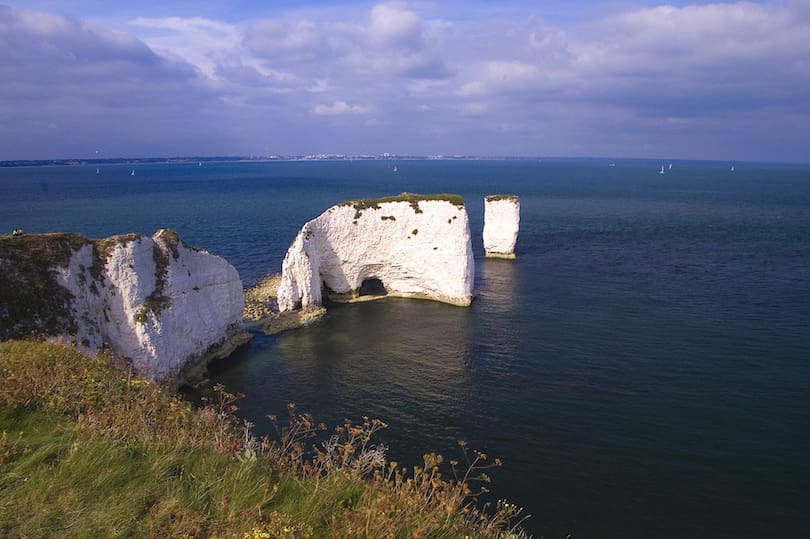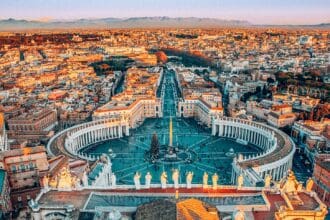Tiwanaku is an ancient archaeological site located near the south-eastern shore of Lake Titicaca in Bolivia. It is a UNESCO World Heritage Site and has been recognized as one of the most important pre-Columbian sites in South America. This article explores the Secrets of Tiwanaku in Bolivia, including its history, architecture, art, and culture.
History of Tiwanaku
The history of Tiwanaku dates back to around 400 BC when the first settlements were established in the area. It reached its peak between 500 and 900 AD, during which it became a major center of culture and commerce in the Andean region. The decline of Tiwanaku occurred in the 12th century due to a combination of factors, including climate change, overpopulation, and political instability.
Architecture of Tiwanaku
The architecture of Tiwanaku is characterized by massive stone structures, such as the Akapana Pyramid and the Pumapunku complex. The Akapana Pyramid is a stepped pyramid that is approximately 480 feet long and 197 feet wide. The Pumapunku complex is a large platform that contains numerous stone blocks that were carved with precision using advanced techniques.
Art and Culture of Tiwanaku
The art and culture of Tiwanaku were deeply influenced by their religion, which was centered around the worship of the god Viracocha. The Tiwanaku people were known for their metalworking skills and created intricate gold and silver ornaments, as well as copper and bronze tools. They also produced fine pottery, textiles, and stone carvings.
Discoveries at Tiwanaku
Excavations at Tiwanaku have revealed a wealth of artifacts, including ceramic vessels, textiles, metalwork, and stone carvings. Some of the most significant discoveries include the Gateway of the Sun, a stone monolith that is believed to have served as a solar calendar, and the Bennett monolith, which depicts a bearded figure that is believed to represent the god Viracocha.
Theories and Controversies Surrounding Tiwanaku
Despite extensive research, there are still many mysteries surrounding Tiwanaku. Some researchers believe that Tiwanaku was part of a larger network of civilizations in the Andean region, while others believe that it was an independent culture that influenced the surrounding civilizations. There is also controversy surrounding the advanced techniques used to create the stone structures at Tiwanaku, with some theories suggesting that they were created with the help of extraterrestrial technology.
Preservation Efforts and Tourism at Tiwanaku
Due to its cultural significance, Tiwanaku has been the subject of extensive preservation efforts. The Bolivian government has established a national museum at the site, as well as a research center that is dedicated to studying the history and culture of the Tiwanaku people. The site is also a popular tourist destination, with visitors coming from all over the world to explore the ruins and learn about the ancient civilization that once thrived there.
Conclusion
Tiwanaku is a fascinating archaeological site that offers a glimpse into the history and culture of one of the most important pre-Columbian civilizations in South America. Its massive stone structures, intricate art, and complex culture have captured the imagination of researchers and visitors alike, and continue to inspire new theories and discoveries. By exploring the secrets of Tiwanaku, we can gain a deeper understanding of the rich cultural heritage of the Andean region.
FAQs
- When was Tiwanaku built? Tiwanaku dates back to around 400 BC, but reached its peak between 500 and 900 AD.
- What is the significance of the Akapana Pyramid? The Akapana Pyramid is a massive stepped pyramid at Tiwanaku that served as a ceremonial center and possibly as a royal residence.
- What is the Gateway of the Sun? The Gateway of the Sun is a stone monolith at Tiwanaku that is believed to have served as a solar calendar.
- What is the Bennett monolith? The Bennett monolith is a large stone carving at Tiwanaku that depicts a bearded figure that is believed to represent the god Viracocha.
- Is Tiwanaku open to visitors? Yes, Tiwanaku is open to visitors and is a popular tourist destination. Visitors can explore the ruins and learn about the ancient civilization that once thrived there.












so much good information on here, : D.
This is the right blog for anyone who wants to find out about this topic. You realize so much its almost hard to argue with you (not that I actually would want…HaHa). You definitely put a new spin on a topic thats been written about for years. Great stuff, just great!